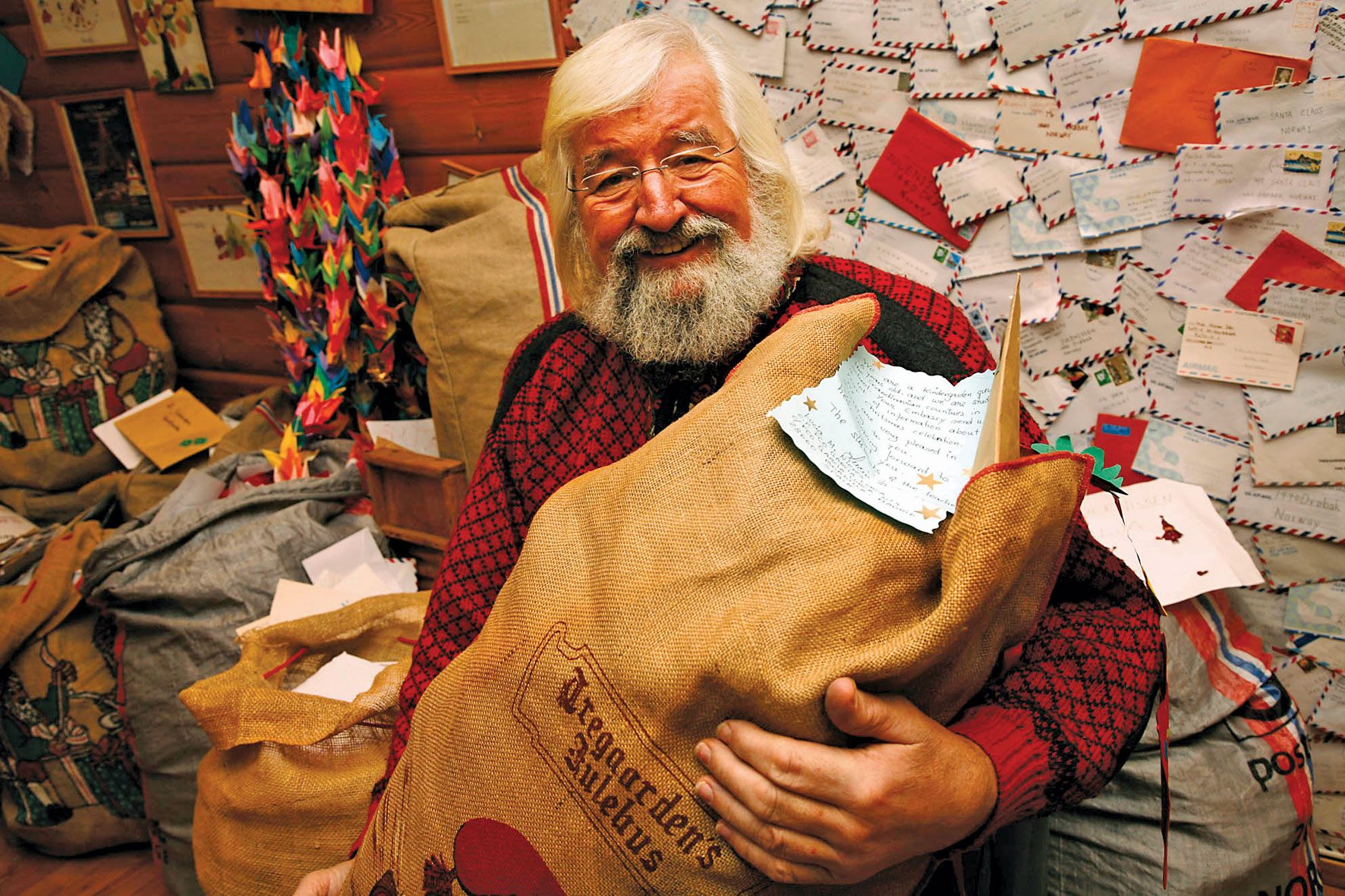

Drøbak is also known for its magnificent sunsets, so we present our small town with a smile. You can sit by the blue Oslofjord in your boat or at a cozy sidewalk café, enjoy a good meal and lift the glass towards the sun, as it goes down behind the wooded landscape to the west.
The white sails on the boats fluttering in the wind and the smell of sea water help to create the very special atmosphere in Drøbak on a beautiful summer evening. Maybe a wooden snail will come in tough with tonight's catch of fresh mackerel…
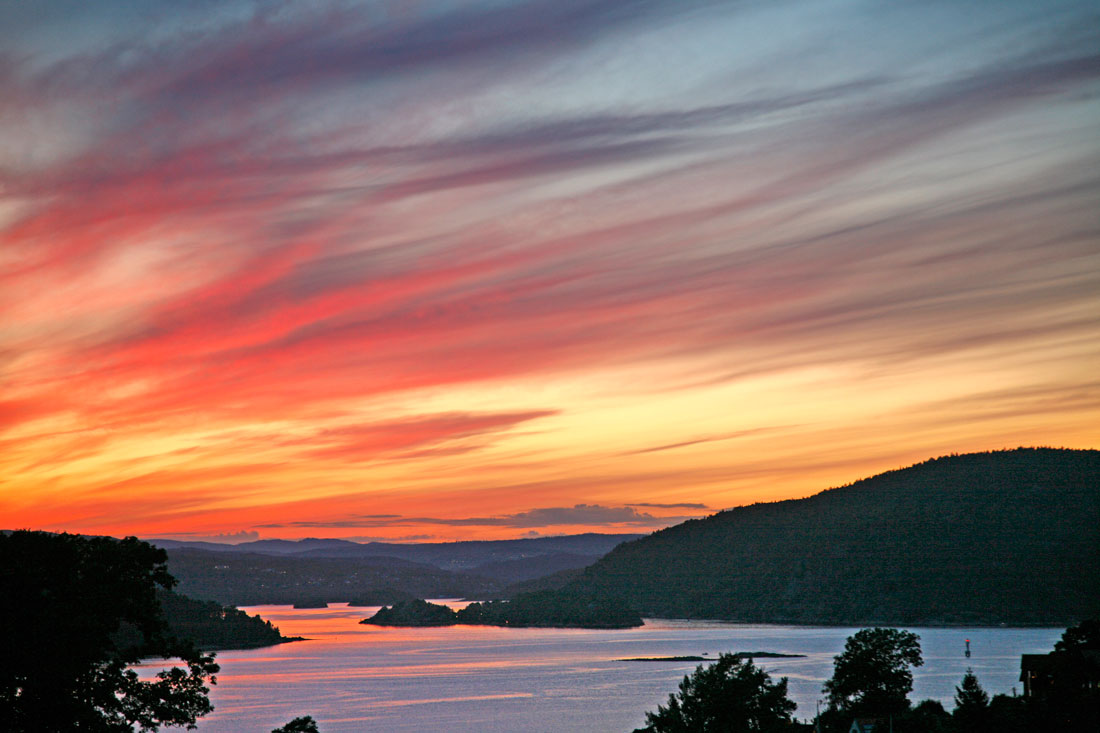
The winter also offers experiences in Drøbak. Haze and drift ice
on the fjord is framed by a snow-covered landscape. Cargo and passenger ships sail past with lit lanterns. The glare from the lighthouses and the illuminated Oscarsborg Fortress light up in the winter darkness. Now we are in Santa's hometown. His spirit hovers over the city, the forest and the fjord, so therefore we under ourselves a little nostalgia, humor and adventure.

Drøbak grew out of sailing ships in the 1700s and 1800s, where ships carried ice blocks and timber for export and food, as well as handicraft and industrial products for import. In 1814, Drøbak became a customs post. On 20 August 1842, Drøbak, as the first village in the region (Akershus), was granted status as a town. At that time, the city had approx. 1000 inhabitants.

The name Drøbak comes from the location where the city rises
abruptly up from the fjord. Drøbak is probably an abbreviation of "dry hills".
The small cluster of wooden houses grew year by year and to this day we can rejoice in the original and conservation-worthy wooden buildings from the 1700th century. The houses in the city center are protected by strict architectural regulations. Fishermen, sailors, artisans and traders built their houses based on the opportunities and economic conditions of the time. The small houses along the "Fisherman's Beach", where the poor once lived, are today coveted treasures. Drøbak is in many ways Norwegian history in a nutshell. Prosperity today must be seen against the background of past poverty and hardship.
In 1962, the urban municipality of Drøbak was merged with the rural municipality of Frogn. Drøbak is today the center of Frogn municipality
and with approx. 15.000 inhabitants, there is a wide range of sidewalk cafes, shops, public institutions and small businesses. Many of these are housed in the classic wooden buildings that we are so proud of.
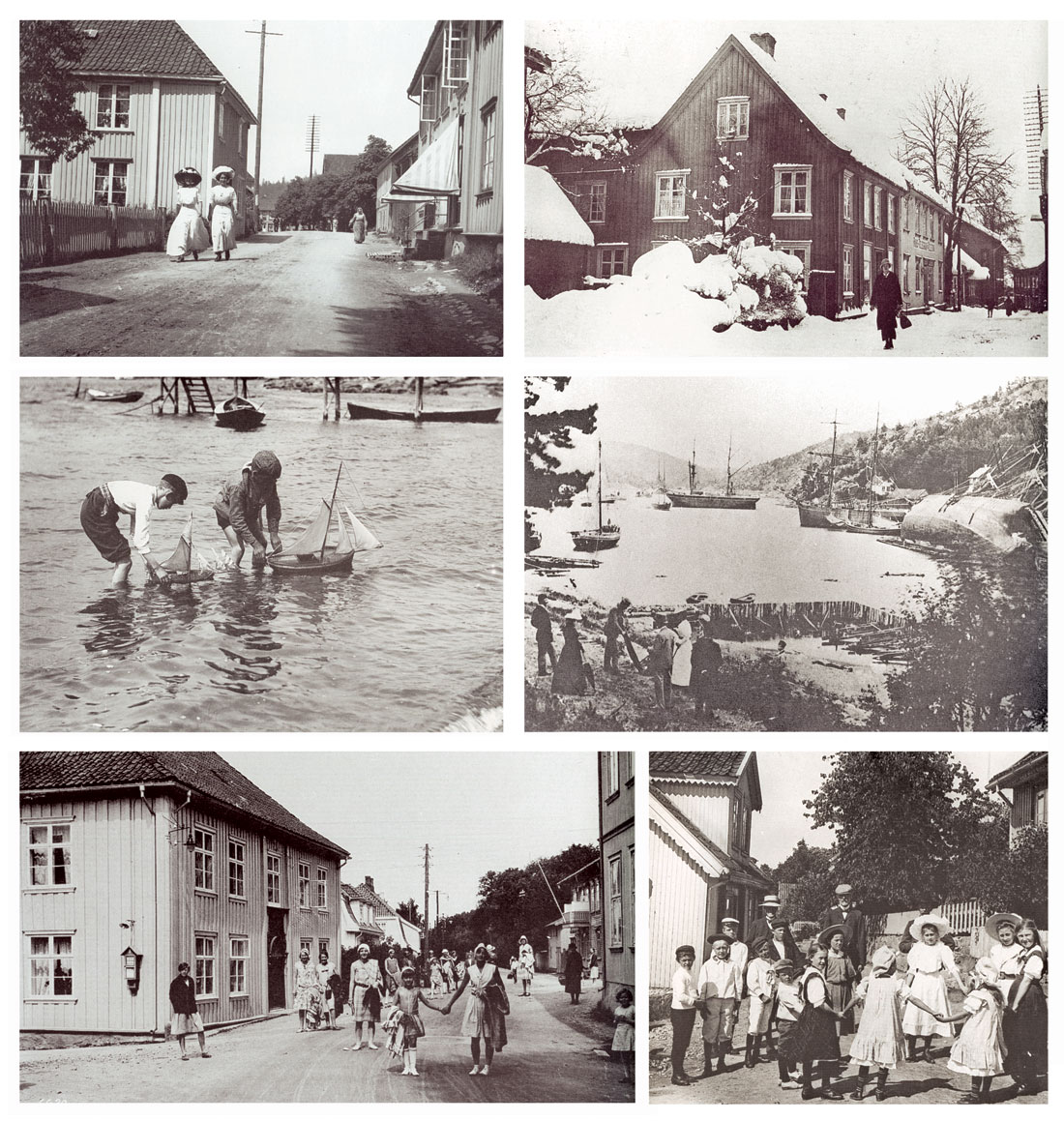
Verneforeningen Gamle Drøbak stands today as a strong advocate for preserving and maintaining the city's old houses and the environment. At www.verneforeningen.no you can take a historical tour of Drøbak and see pictures from before and now. You can choose between different languages.
In the 1800th century, the country's capital grew rapidly and many sought out the big city in the summer. Steamships with wealthy passengers from Christiania (which became "Oslo" in 1925) docked in Drøbak and hotels, guest houses and shops experienced a boom in the summer. Likewise, bathing and outdoor life became a source of development for Drøbak. The town got a spa in Bade-parken in the center and Drøbak is still a popular seaside resort with fine beaches.
Many well-known Norwegian painters and writers have had Drøbak as a place of inspiration and residence. These include Knut Hamsun, who won the Nobel Prize in Literature, the poet Herman Wildenvey and the painters Christian Krohg, the Bergslien brothers, Hans Fredrik Gude and Edvard Diriks - who were Edvard Munch's cousins. Of artists of our own time, Ferdinand Finne is perhaps the most famous. His saying "the road is created while you walk it" can be used for a trip around Drøbak.

Drøbak's history is inextricably linked to Oscarsborg's Fortress. Where the Oslo Fjord is smallest, a fortification was started in 1643–45. At the end of the 1800th century, this facility was further expanded and at the dissolution of the union with Sweden in 1905, Oscarsborg was perhaps Norway's strongest military facility. Large parts of the fortress' foundations were ironically built by Swedish craftsmen.
The fortress was of great importance on April 9, 1940 when Germany attacked Norway without a declaration of war. An improvised and poorly trained garrison was able to lower the German cruiser "Blücher" with cannon shots and torpedoes. The occupiers came to taste their own medicine because the cannons "Aaron" and "Joshua" were of German origin. It was fired on the command of Colonel Birger Eriksen, who after the war was honored for his efforts.
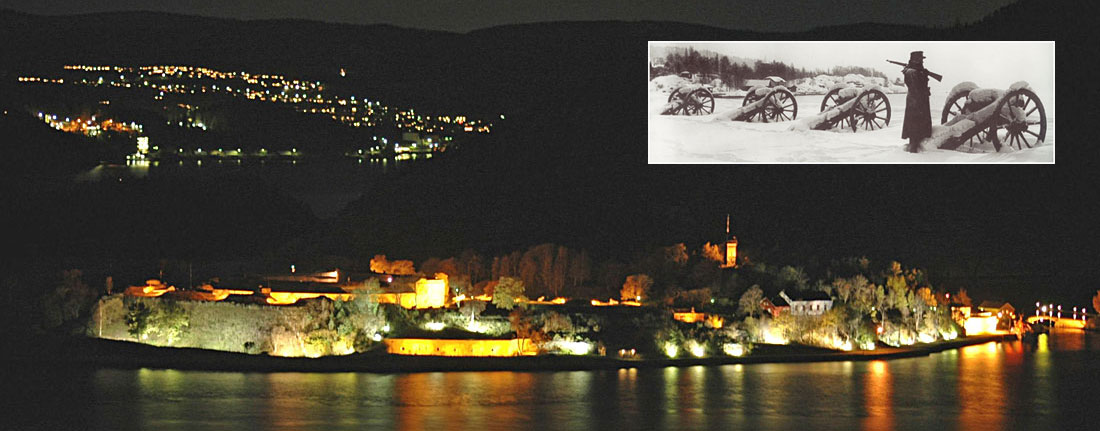
On board the ship were gathered the most senior military personnel and when the cruiser sank, it took approx. 900 men with him in the depths. The loss delayed the occupation of the Norwegian capital. The Norwegian royal family, the government, the Storting and Norges Bank's gold holdings were evacuated from Oslo. This became the basis for later Norwegian war efforts from London.
The wreck of "Blücher" is still at the bottom of the Oslo Fjord by Askholmene northeast of Oscarsborg. It was a ticking environmental bomb until it was depleted of oil in 1994-95. The anchors have been pulled ashore and one is today a memorial in Bade-parken in Drøbak by the statue of Colonel Birger Eriksen.

Today, Oscarsborg has no military functions but has a commander and split flag. The fortress has a large defense museum and it is exciting to join a guided tour. There are also restaurants, a hotel and a marina which help to make the area something special.
The courtyard is used in the summer for cultural events with professional opera productions and concerts. From Drøbak there is a regular ferry to Oscarsborg.
The aquarium was built by volunteers from Drøbak boat association and contains a number of fish species, shellfish and sea animals that are found in Drøbaksundet. The purpose of the aquarium was to recreate the environment and life in the fjord. Today, the place is the most visited attraction in the entire Akershus region. The aquarium is run in collaboration with the Department of Marine Biology in Drøbak, which is part of the University of Oslo.
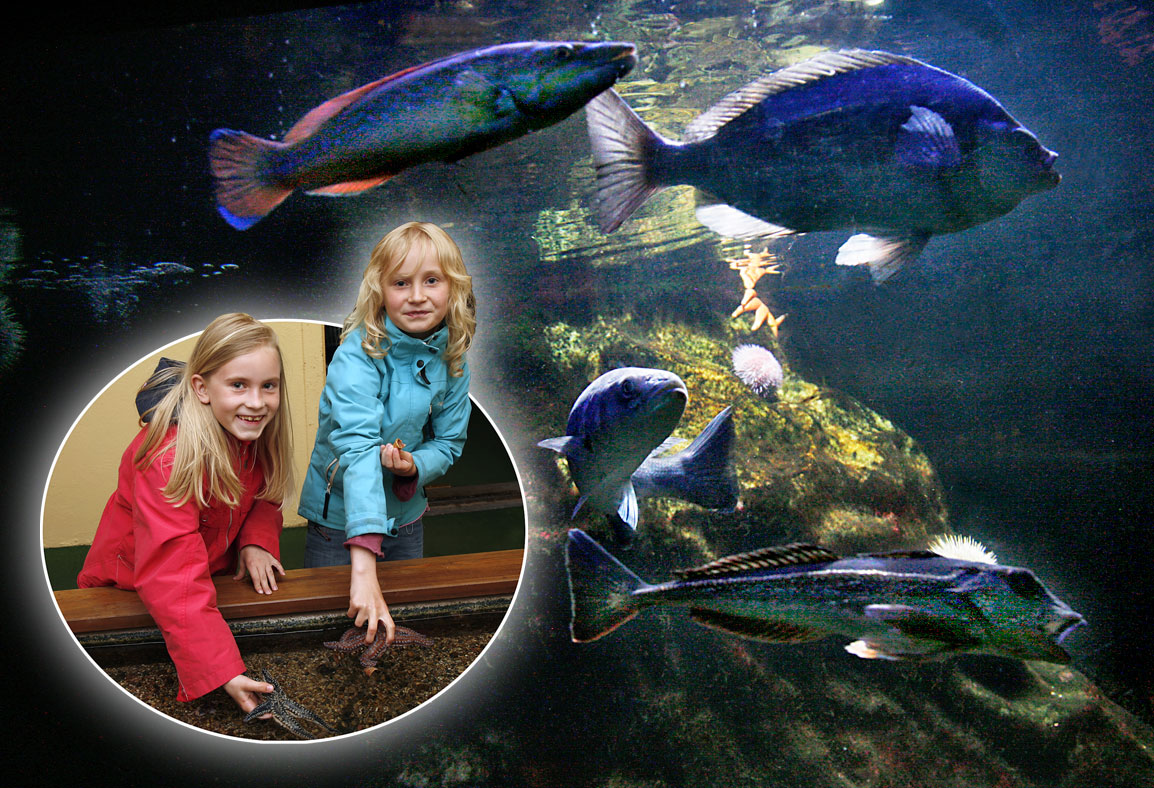

The harbor in Drøbak with its leisure and fishing boats is an oasis for everyone who wants to enjoy life and unwind. There is life and activity all year round and not least in the summer. Fresh shrimp and today's fish catch right from the boat is a specialty at the harbor in Drøbak. Remember that shrimp always taste best at the water's edge. Therefore, sit on a bench on the harbor promenade and enjoy life to the fullest.
From the pier and from the beach you can try fishing. Drøbaksundet is one of the Oslo Fjord's best fishing spots. It is free to fish in the sea in Norway, but you must bring your own fishing rod.
At Sjøtorget, which is located in the southern part of the harbor area, you will find the Tourist Information. Here you can get city maps and other information material. No matter where you come from in Norway, Europe or other continents, we hope that there is a lot you will enjoy in Drøbak. It's easy to get here. It only takes 40 minutes by bus from Oslo city center. In the summer there is also a boat to Drøbak from Aker Brygge in Oslo.
